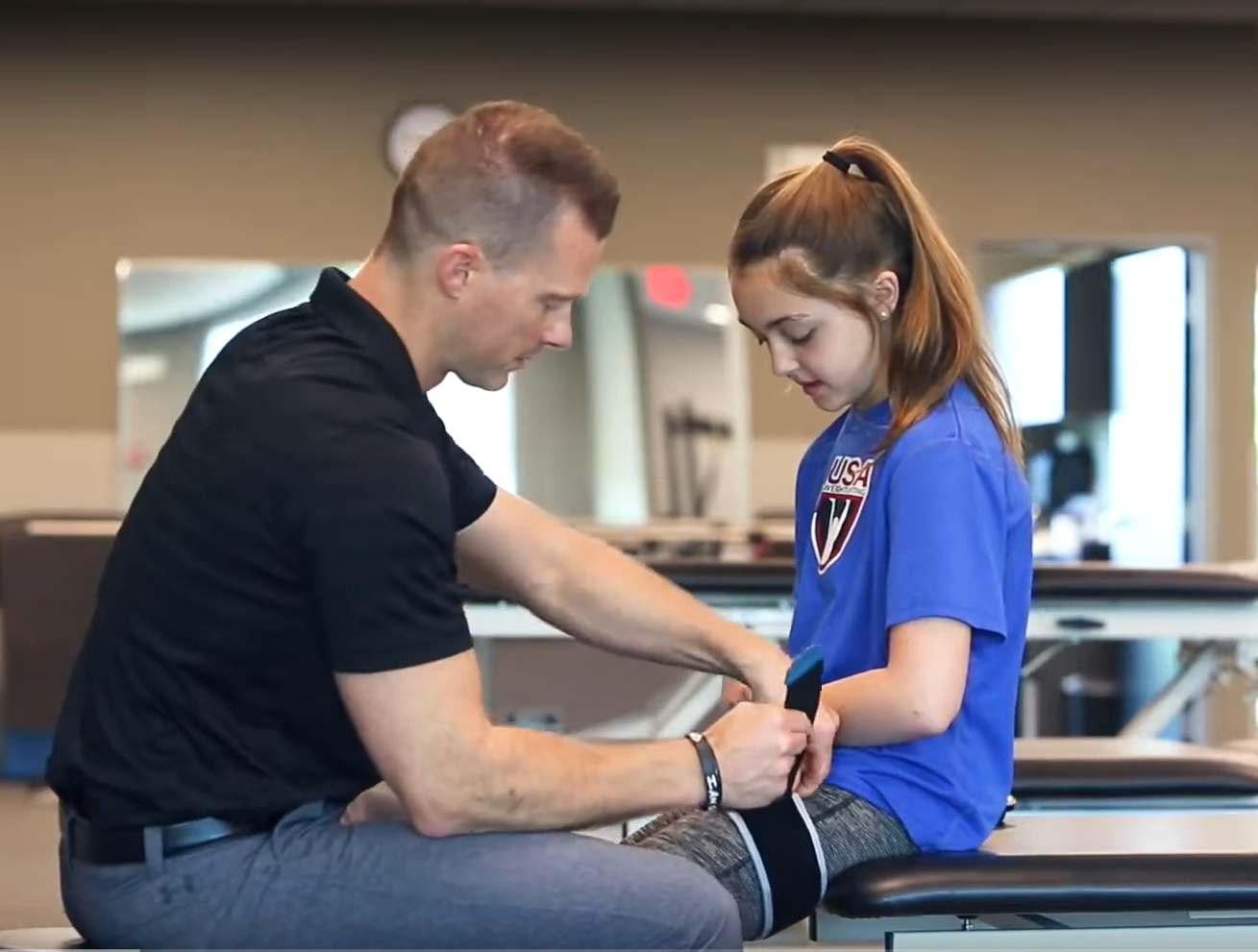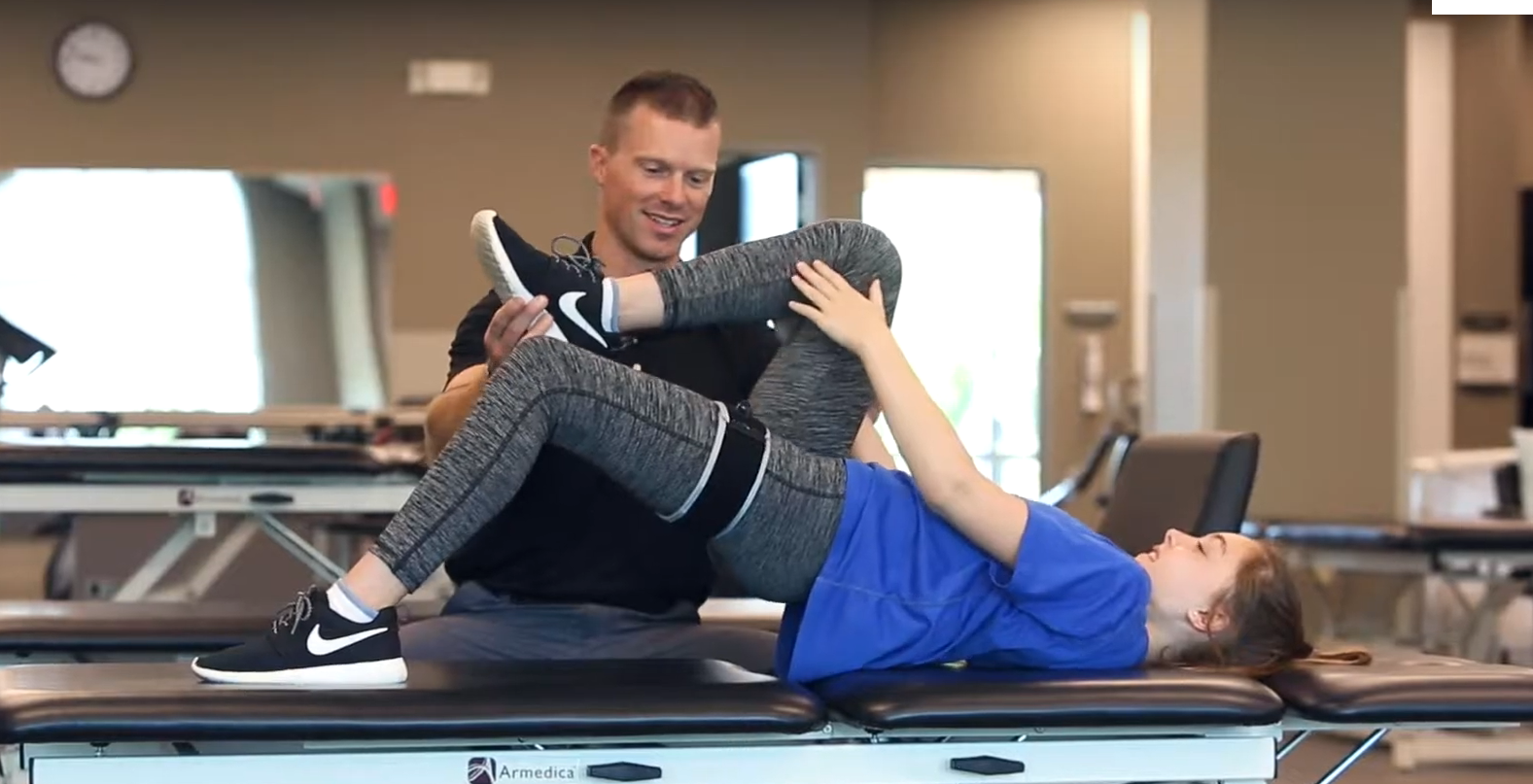BFR Research
Review
1.Loenneke JP, Wilson JM, Marín PJ, Zourdos MC, Bemben MG (2012). Low intensity blood flow restriction training: a meta-analysis. European Journal of Applied Physiology, 112(5), 1849-1859.
2.Slysz J, Stultz J, Burr, JF (2015). The efficacy of blood flow restricted exercise: A systematic review & meta-analysis. Journal of Science and Medicine in Sport, 19; 669–675.
3.Anderson M, Lance L (2017) Blood Flow Restriction Therapy: Theories, Science, and Current Clinical Results. Newsletter of the AOSSM, Spring 2017; 2-6.
4.Hughes L, Paton B, Rosenblatt B, Gissane C, Patterson DP (2017). Blood flow restriction training in clinical musculoskeletal rehabilitation: a systematic review and meta-analysis. British Journal of Sports Medicine, Jul;51(13):1003-1011.
5.Scott BR, Loenneke JP, Slattery KM, Dascombe BJ (2015). Exercise with blood flow restriction: an updated evidence-based approach for enhanced muscular development, Sports Medicine, Mar;45(3):313-25.
6.Neto GR, Novaes JS, Dias I, Brown A, Vianna J, Cirilo-Sousa MS (2017). Effects of resistance training with blood flow restriction on haemodynamics: a systematic review. Clinical Physiology & Functional Imaging Nov; 37(6):567-574.
7.Abe T, Loenneke JP, Fahs CA, Rossow LM, Thiebaud RS, Bemben MG (2012). Exercise intensity and muscle hypertrophy in blood flow-restricted limbs and non-restricted muscles: a brief review. July;32(4):247-52.
8.Manini TM, Clark BC (2009). Blood flow restricted exercise and skeletal muscle health. Exercise and Sports Science Reviews. April 37(2):78-85.
9.Lixandro ME, et al. (2018). Magnitude of Muscle Strength and Mass Adaptations Between High-Load Resistance Training Versus Low-Load Resistance Training Associated with Blood-Flow Restriction: A Systematic Review and Meta-Analysis. Journal of Sports Medicine. Feb;48(2):361-378.
10.Barber-Westin S, Noyes FR (2019). Blood Flow–Restricted Training for Lower Extremity Muscle Weakness due to Knee Pathology: A Systematic Review. Sports Health: A Multidisciplinary Approach. 11(1):69–83.
11.Jones CM, Griffiths PC, Mellalieu SD. (2017). Training Load and Fatigue Marker Associations with Injury and Illness: A Systematic Review of Longitudinal Studies. Sports Medicine. 47(5): 943–974.
12.Bennett H, Slattery F. (2018). Effects of blood flow restriction training on aerobic capacity and performance: A systematic review. Journal of Strength & Conditioning Research. 33(2): 572-583.
Mechanism
1.Horiuchi M, Okita K (2012). Blood flow restricted exercise and vascular function. International Journal of Vascular Medicine, 2012:543218.
2.Manini, TM, Yarrow JF, Buford TW, Clark BC, Conover CF, Borst SE. Growth hormone responses to acute resistance exercise with vascular restriction in young and old men. Growth hormone and IGF Research. Oct;22(5):167-72.
3.Fry CS, Glynn EL, Drummond MJ, Timmerman KL, Fujita S, Abe T, Dhanani S, Volpi E, Rasmussen BB (1985). Blood flow restriction exercise stimulates mTORC1 signaling and muscle protein synthesis in older men. Journal of Applied Physiology, May;108(5):1199-209.
4.Heitkamp HC (2015). Training with blood flow restriction. Mechanisms, gain in strength and safety. Journal of Sports Medicine and Physical Fitness, May;55(5):446-56.
5.Shimizu R, et al (2016). Low-intensity resistance training with blood flow restriction improves vascular endothelial function and peripheral blood circulation in healthy elderly people. European Journal of Applied Physiology, Apr;116(4):749-57.
6.Doessing S, Heinemeier KM, Holm L, et al. Growth hormone stimulates the collagen synthesis in human tendon and skeletal muscle without affecting myofibrillar protein synthesis. Journal of Physiology. (2010) 588: 341–51.
7.H. Takano, et al. (2005) Hemodynamic and hormonal responses to a short-term low-intensity resistance exercise with the reduction of muscle blood flow. European Journal of Applied Physiology, 95: 65–73.
8.Lorenz DS, Morrison S (2015). Current Concepts in Periodization of Strength and Conditioning for the Sports Physical Therapist. International Journal of Sports Physical Therapy. Nov; 10(6): 734-747.
9.Reiman MP, Lorenz DS (2011). Integration of Strength and Conditioning Principles into a Rehabilitation Program. International Journal of Sports Physical Therapy. Sep; 6(3): 241–253.
10.Loenneke JP, Abe T, Wilson JM, Ugrinowitsch C, & Bemben MG (2012) Blood flow restriction: how does it work? Frontiers in Physiology, 3, 392.
11.Loenneke JP, Wilson GJ, & Wilson JM (2010) A mechanistic approach to blood flow occlusion. International Journal of Sports Medicine, 31(1), 1-4.
12.Wernbom, M., Paulsen, G., Nilsen, T. S., Hisdal, J., & Raastad, T. (2012). Contractile function and sarcolemmal permeability after acute low-load resistance exercise with blood flow restriction. European Journal of Applied Physiology, 112(6), 2051-2063.
13.Yasuda, T, Abe T et al. (2010). Venous blood gas and metabolite response to low-intensity muscle contractions with external limb compression. Metabolism, 59(10), 1510-1519.
14.Baker JS, McCormick MC, Robergs RA (2010). Interaction among Skeletal Muscle Metabolic Energy Systems during Intense Exercise. Journal of Nutrition and Metabolism; Dec 6.
15.Laurentino CG, et al. (2012). Strength Training with Blood Flow Restriction Diminishes Myostatin Gene Expression. Medicine & Science in Sports and Exercise. 44:406-12.
16.Husmann F, Mittlmeier T, Bruhn S, Zschorlich V, Behrens M. (2018) Impact of BFR Exercise on Muscle Fatigue Development and Recovery. Medicine and Science in Sports & Exercise. Mar;50(3):436-446.
Safety
1.T. Nakajima, M. Kurano, H. Iida, H. Takano, H. Oonuma, T. Morita, K. Meguro, Y. Sato, T. Nagata (2006). Use and safety of KAATSU training: Results of a national survey. International Journal of KAATSU Training Research, 2(1):5-13
2.Yasuda T, Meguro M, Sato Y, Nakajima T (2017). Use and safety of KAATSU training: Results of a national survey. International Journal of KAATSU Training Research, 13: 1-9.
3.Loenneke JP, Wilson JM, Wilson GJ, Pujol TJ, Bemben MG (2011). Potential safety issues with blood flow restriction training. Scandinavian Journal of Medicine & Science in Sports, August; 21(4):510-8.
4.Clark, B. C., et al. (2011). Relative safety of 4 weeks of blood flow-restricted resistance exercise in young, healthy adults. Scandinavian Journal of Medicine & Science in Sports, 21(5), 653-662.
5.Loenneke JP, Fahs CA, Rossow LM, et al. Effects of cuff width on arterial occlusion: implications for blood flow restricted exercise. European Journal of Applied Physiology. 2012;112(8):2903–12.
6.https://www.fda.gov/
7.Rossow LM, Fahs CA, Loenneke JP, et al. Cardiovascular and perceptual responses to blood-flow-restricted resistance exercise with differing restrictive cuffs. Clinical Physiological and Functional Imaging. 2012;32(5):331–7.
8.Loenneke JP, Balapur A, Thrower AD, Barnes JT, Pujol TJ. The perceptual responses to occluded exercise. International Journal of Sports Medicine. 2011;32(3):181–184.
9.Loenneke JP et al. (2013) Blood flow restriction pressure recommendations: a tale of two cuffs. Frontiers in Physiology. Sep 10;4:249.
10.Nakajima T. Key Considerations when conducting KAATSU training. Int. J. KAATSU Training Res. 2011; 7: 1-6.
11.Mattar MA, Gualano B, Perandini LA, Shinjo SK, Lima FR, Sá-Pinto AL, Roschel H. (2014). Safety and possible effects of low-intensity resistance training associated with partial blood flow restriction in polymyositis and dermatomyositis. Arthritis Research & Therapy. Oct 25;16(5):473.
12.Loenneke JP, Young KC, Wilson JM, Andersen JC.. (2013). Rehabilitation of an osteochondral fracture using blood flow restricted exercise: a case review. Journal of Body Work & Movement Therapies. Jan;17(1):42-5.
13.Madarame H, Kurano M, Fukumura K, Fukuda T, Nakajima T. (2013). Haemostatic and inflammatory responses to blood flow-restricted exercise in patients with ischaemic heart disease: a pilot study. Clinical Physiology & Functional Imaging. Jan;33(1):11-7.
14.Loenneke JP, Thiebaud RS, Abe T. (2014) Does blood flow restriction result in skeletal muscle damage? A critical review of available evidence. Scandinavian Journal of Medicine in Science & Sports. Dec; 24(6): 415-422.
15.Wilson, J. M., Lowery, R. P., Joy, J. M., Loenneke, J. P., & Naimo, M. A. (2013). Practical blood flow restriction training increases acute determinants of hypertrophy without increasing indices of muscle damage. The Journal of Strength & Conditioning Research, 27(11), 3068-3075.
16.MacDougall, J. D., Tuxen, D. S. D. G., Sale, D. G., Moroz, J. R., & Sutton, J. R. (1985). Arterial blood pressure response to heavy resistance exercise. Journal of Applied Physiology, 58(3), 785-790.
17.MacDougall, J. D., McKelvie, R. S., Moroz, D. E., Sale, D. G., McCartney, N., & Buick, F. (1992). Factors affecting blood pressure during heavy weight lifting and static contractions. Journal of Applied Physiology, 73(4), 1590-1597.
18.Tanaka Y & Takarada Y. (2018). The impact of aerobic exercise training with vascularocclusion in patients with chronic heart failure ESC Heart Failure: March (5) 586–591.
19.Loenneke JP, Thiebaud RS, Abe T, Bemben MG (2014). Blood flow restriction pressure recommendations: the hormesis hypothesis. Medical Hypothesis. May;82(5):623-6.
20.Yasuda T, Fukumura K, Fukuda T, Uchida Y, Iida H, Meguro M, Sato Y, Yamasoba T, Nakajima T (2014). Muscle size and arterial stiffness after blood flow-restricted low-intensity resistance training in older adults. Scandinavian Journal of Medicine & Science in Sports. 24(5):799–806.
21.Mouser JG, Jessee MB, Mattocks HT, Bell ZW, Buckner SL, Dankel SJ, Abe TA, Loenneke JP (2018). Blood flow restriction: Methods matter. Experimental Gerontology. 104():7–8.
Efficacy
1.Larkin KA, Macneil RG, Dirain M, Sandesara B, Manini TM, Buford TW. (2012) Blood Flow Restriction Enhances Post-Resistance Exercise Angiogenic Gene Expression. Medicine & Science in Sports & Exercise: 44 (11) 2077-2083.
2.Dankel SJ, Jessee MB, Abe T, Loenneke JP (2016). The Effects of Blood Flow Restriction on Upper-Body Musculature Located Distal and Proximal to Applied Pressure. Sports Medicine, 46(1):23-33.
3.Luebbers PE, et al. (2017) The Effects Of Practical Blood Flow Restriction Training On Adolescent Lower Body Strength. The Journal of Strength and Conditioning Research, October 27 – ahead of print.
4.Abe T, Kearns CF, Sato Y. (2006) Muscle size and strength are increased following walk training with restricted venous blood flow from the leg muscle, Kaatsu-walk training. Journal of Applied Physiology, 100:1460–1466.
5.Luebbers PE, Fry AC, Kriley LM, Butler MS (2014). The effects of a 7-week practical blood flow restriction program on well-trained collegiate athletes. The Journal of Strength and Conditioning Research, August 28(8):2270-2280.
6.Tennent DJ, Hylden CM, Johnson AE, Burns TC, Wilken JM, Owens JG (2017). Blood Flow Restriction Training After Knee Arthroscopy: A Randomized Controlled Pilot Study. Clinical Journal of Sports Medicine, May; 27(3); 245-252.
7.Takarada et al. (2000) Effects of resistance exercise combined with moderate vascular occlusion on muscular function in humans. Journal of Applied Physiology. 88: 2097-2106.
8.Yasuda T, et al. (2005) Muscle fiber cross-sectional area is increased after two weeks of twice daily KAATSU-resistance training. International Journal of KAATSU Training Research. 2:65-70.
9.Kubota et al. (2008) Prevention of Disuse Muscular Weakness by Restriction of Blood Flow. Medicine & Science in Sports & Exercise. 40(3):529-534
10.Eonho K, et al. Hormone Responses to an Acute Bout of Low Intensity Blood Flow Restricted Resistance Exercise in College-Aged Females. Journal of Sports & Scientific Medicine. 2014 Jan; 13(1): 91–96.
11.Takarada Y , Nakamura Y , Aruga S , Onda T , Miyazaki S , Ishii N. (2000) Rapid increase in plasma growth hormone after low-intensity resistance exercise with vascular occlusion. Journal of Applied PhysiologyI; 88: 61-65.
12.Vanwye WR, Wetherholt AM, Mikesky AE. (2017) Blood Flow Restriction Training: Implementation into Clinical Practice. International Journal of Exercise Science; 10(5): 649–654.
13.Kacin, A., & Strazar, K. (2011). Frequent low-load ischemic resistance exercise to failure enhances muscle oxygen delivery and endurance capacity. Scandinavian Journal of Medicine & Science in Sports, 21(6), 231-241.
14.Lixandrão, M. E., Ugrinowitsch, et al. (2015). Effects of exercise intensity and occlusion pressure after 12 weeks of resistance training with blood-flow restriction. European Journal of Applied Physiology, 1-10.
15.Yasuda, T., Fujita, S., Ogasawara, R., Sato, Y., & Abe, T. (2010). Effects of low-intensity bench press training with restricted arm muscle blood flow on chest muscle hypertrophy: a pilot study. Clinical Physiology and Functional Imaging, 30(5), 338-343.
16.Lowery, R. P., Joy, J. M., Loenneke, J. P., Souza, E. O., Machado, M., Dudeck, J. E., & Wilson, J. M. (2014). Practical blood flow restriction training increases muscle hypertrophy during a periodized resistance training programme. Clinical Physiology and Functional Imaging, 34(4), 317-321.
17.O'Halloran, J., Campbell, B., et al. (2014). The effects of practical vascular blood flow restriction training on skeletal muscle hypertrophy. Journal of the International Society of Sports Nutrition, 11; 18.
18.Abe T, Sato Y, et al. (2005). Skeletal muscle size and circulating IGF-1 are increased after two weeks of twice daily KAATSU resistance training. International Journal of KAATSU Training Research; 1: 6-12.
19.Madarame, H., Neya, M., Ochi, E., Nakazato, K., Sato, Y., & Ishii, N. (2008). Cross-transfer effects of resistance training with blood flow restriction. Medicine and Science in Sports and Exercise, 40(2), 258.
20.Thiebaud RS, et al. (2014). The effects of elastic band resistance training combined with blood flow restriction on strength, total bone-free lean body mass and muscle thickness in postmenopausal women. Clinical Physiology & Functional Imaging. Sep;33(5):344-52.
21.Vechin FC, et al. (2015). Comparisons between low-intensity resistance training with blood flow restriction and high-intensity resistance training on quadriceps muscle mass and strength in elderly. Journal of Strength & Conditioning Research. 29:1071-6.
22.de Oliveira MF1, Caputo F, Corvino R, Denadai BS (2016). Short‐term low‐intensity blood flow restricted interval training improves both aerobic fitness and muscle strength. Scandinavian Journal of Medicine & Science in Sports. Sep;26(9):1017-25.
23.Ladlow P, et al. (2018) Low-load resistance training with blood flow restriction improves clinical outcomes in musculoskeletal rehabilitation: A single-blind randomized controlled trial. Sep 10;9:1269.




